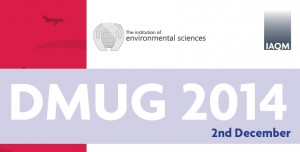More speakers announced for air quality modelling event
DMUG 2014 event will hear from the likes of Arup, King’s College London, Ricardo AEA, AMEC and the University of Leeds
A range of speakers from across the air quality modelling field have been confirmed to appear at the annual Dispersion Modellers User Group (DMUG) 2014 meeting in London next week.
Hosted by the Institute of Air Quality Management, the event takes place next Tuesday (December 2 2014) at the Theatre Royal on Drury Lane in Covent Garden, and provides a forum for modelling consultants, environment regulators and local authority officers engaged in air quality reviewing and assessment.
Eight speakers have so far been confirmed to address delegates at the day-long conference, focusing on the latest developments in air quality modelling both in the UK and around the globe.
The most recent addition to the line-up, Arup consultant Michael Bull will examine how four separate modelling studies in the same area led to different conclusions regarding air quality and consider how modellers can work to get more consistent conclusions.
Christine McHugh of AMEC Foster Wheeler will provide a comparison of air quality in world cities, reflecting on a recent AMEC report published by the Greater London Authority in September which helped to contextualise the capital’s air quality.
Also appearing at the event, Ricardo AEA’s Dr Scott Hamilton will present an overview of the consultancy’s air quality modelling project in Saudi Arabia, while Rebecca Morris — also of Ricardo AEA — will summarise the PCM model, focussing on the mortality burden estimations of PM2.5.
Elsewhere, King’s College London’s Sean Beevers will provide an update of progress with development of a hybrid person exposure model, and University of Leeds’ James Tate will present work on mapping vehicle emissions through urban streets using traffic microsimulation and instantaneous emission models.
Dr Martin Seaton from air pollution software services firm CERC will then present the latest in new developments in modelling air quality in ‘street canyons’, including using concentrations from the network of continuous monitoring sites in London and Hong Kong.
The full programme of speakers at DMUG 2014 is as follows:
- Michael Bull (Arup): Observed variations in modelling studies for cumulative impact assessment
- Sean Beevers (Kings College): Update of progress with development of a hybrid personal exposure model
- John Stedman (AEA): Modelling PM2.5 mortality burdens in the UK
- Ben Marner (AQC): Linking ADMS with microsimulation models
- James Tate (Leeds University): Making better use of microsimulation models for estimating vehicle emissions
- Christine McHugh (AMEC): Comparison of Air Quality in World Cities
- Dr Martin Seaton (CERC): Advances in the treatment of street canyons and urban canopy flow in ADMS-Urban and ADMS-Roads
- Dr Scott Hamilton (Ricardo AEA): Regional and city scale modelling of air quality in Saudi Arabia
















